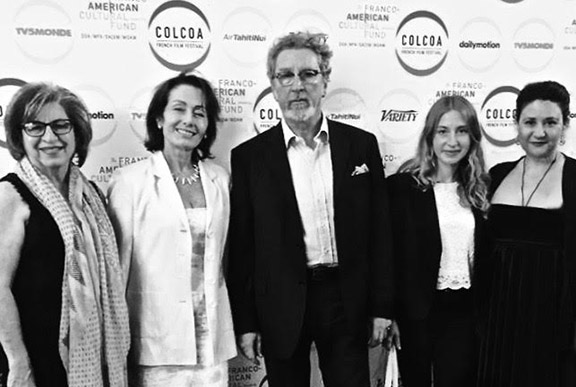
Robert Guédiguian and organizers at his film screening at the Colcoa French Film Festival in Hollywood, California.
BY CATHERINE YESAYAN
As the Armenian community of Los Angeles was preparing to commemorate the hundred first anniversary of the Armenian Genocide, the well-known French/Armenian film director Robert Guédiguian was in Hollywood on Friday, April 22, for the screening of his movie at the Colcoa French Film Festival.
Although there were several events around town that day in remembrance of the Genocide, I managed to attend the screening of Guedigian’s movie, Don’t Tell Me the Boy Was Mad. This was the second time I had seen the movie. The first time was at the Golden Apricot Film Festival in Yerevan last year.
The film begins with a black and white preface, in 1921 Berlin: there, in broad daylight, Soghomon Tehlirian assassinates Talaat Pasha, one of the architects of the Armenian Genocide. He carries out his revenge for Talaat’s role in the mass murder of 1.5 million Armenians. Tehlirian is acquitted in a German court.
Then the movie moves forward three generations to the 1970s, focusing on an Armenian family living in Marseilles, France. The man of the family, Hovannes and his wife, Anoush, own an Armenian grocery store connected to their living quarters. The scene at Hovannes’s home opens with the grandmother singing a familiar tune in Armenian to her granddaughter, then telling her about the heroic act of Soghomon Tehlirian. The great backdrop of this scene melted my heart again the second time watching the movie.At that moment, the father enters the room and hears the conversation. He scolds his mother-in-law for telling his child unnecessary information that belongs to the past. In another scene Aram, Hovannes’s son listens to his grandmother’s hateful stories of what happened to her people: “If you become a captain, fill the ship with explosives and sail it straight into the port of Istanbul,”